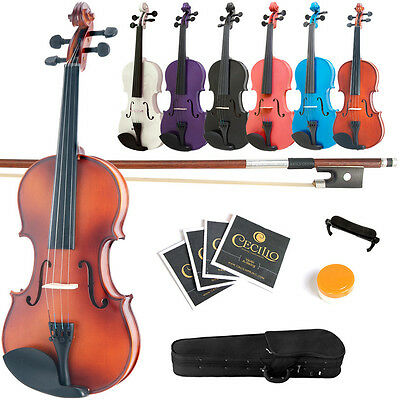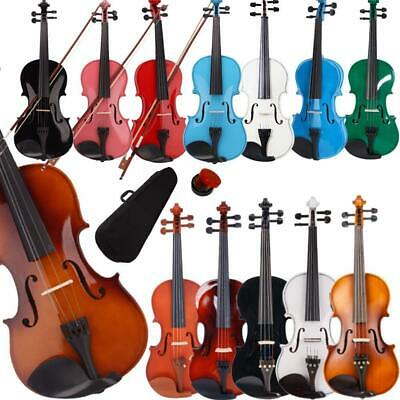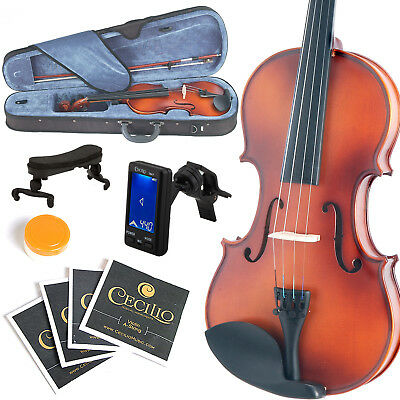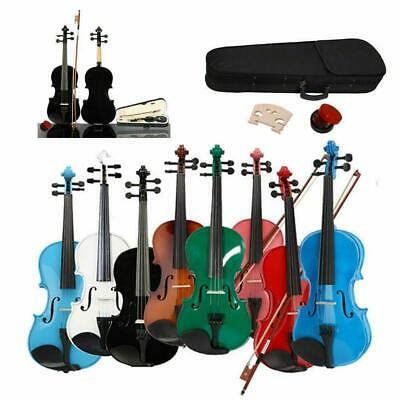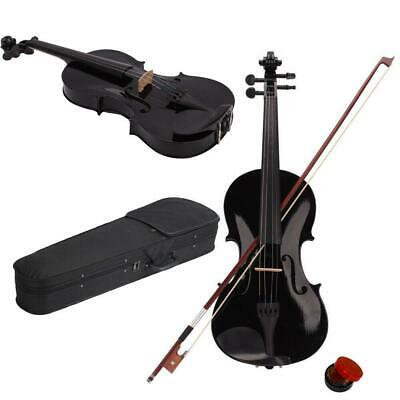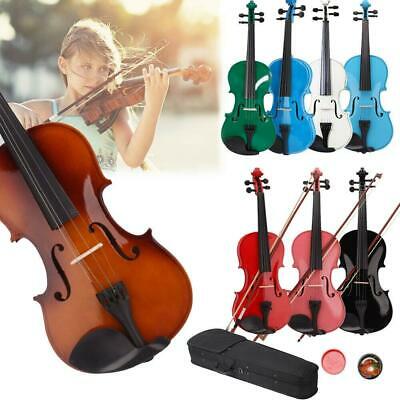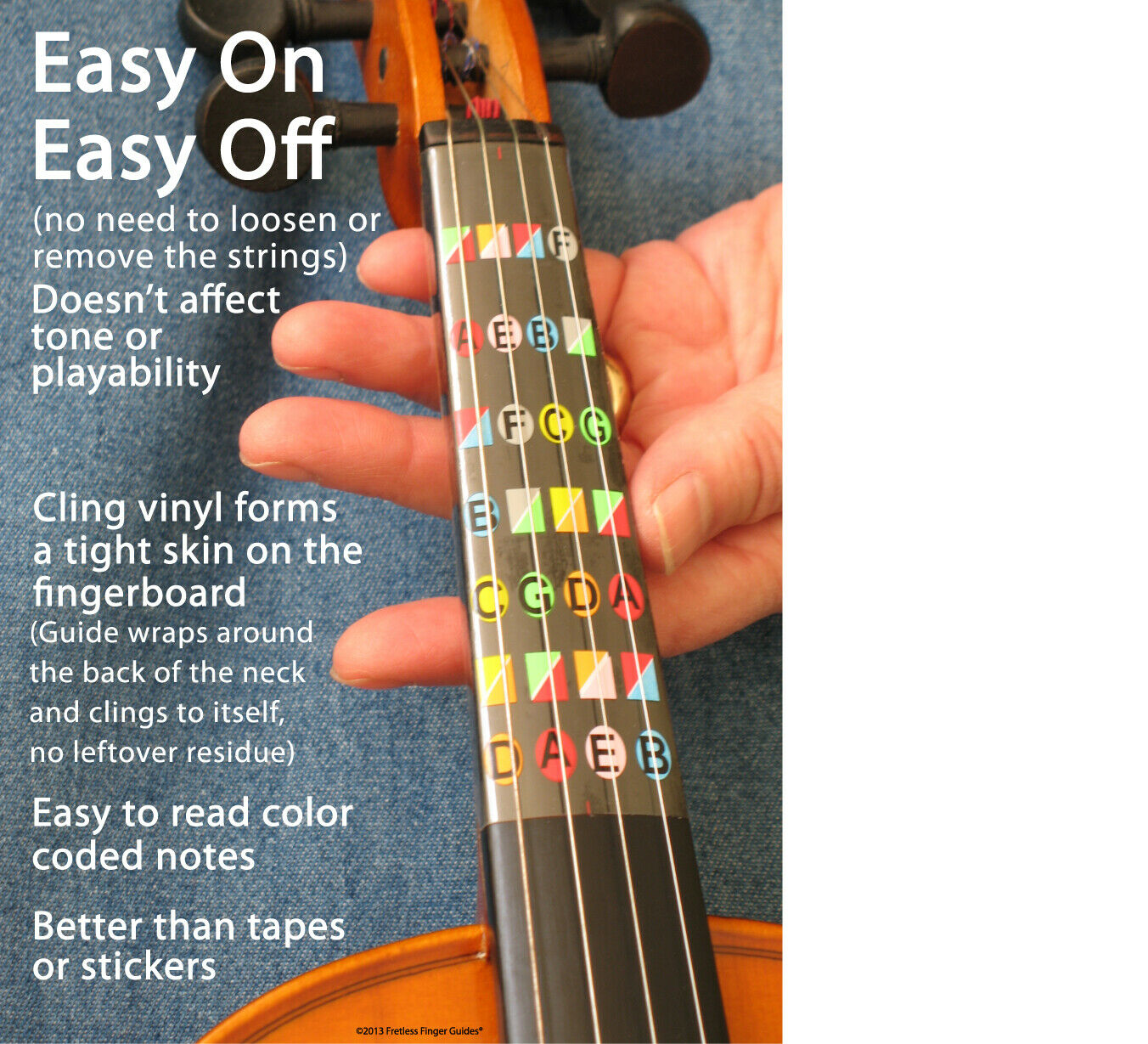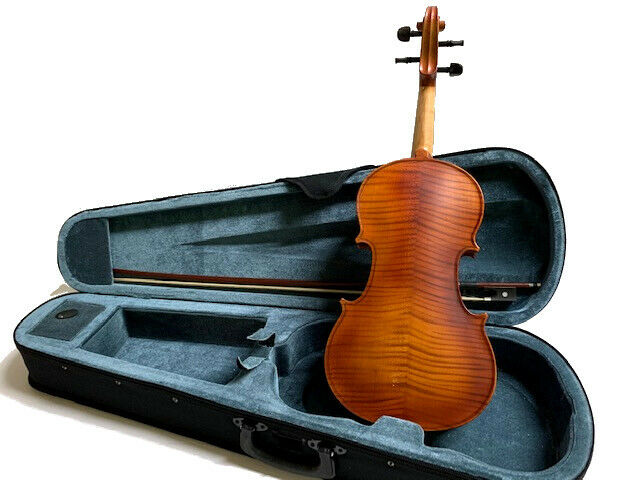-40%
VIOLIN Making/Repair/Restore,Varnish-Tone,Luthier Schools,Masterpieces,Play /DVD
$ 5.01
- Description
- Size Guide
Description
_________________________________________________Welcome to a product distributed by Krypton-Hersir
Gift Quality Computer DVD
TO BE PLAYED ONLY ON a Windows, Mac or Linux COMPUTER or TABLET
You will receive a Computer DVD - You will not receive physical books
___________________________________________________________________
This is the original disc, others are copies or imitations
The best collection on the subject in the English language
THE VIOLIN COLLECTION
Over 90 of the best eBooks
on:
Violin Making
& Makers
-- The Italian, French, German & English Schools --
Repair & Restoration
Varnish & Tone
Masterpieces
History
Violin Playing
by Etelond Publishers
Note:
We offer a larger disc w
ith additional works in French and German. If you are interested, please
click here
The ebooks included in the Computer DVD are listed below,
for a few of the ebooks the contents is detailed in blue letters
(to give full details would take dozens of pages):
Repairing & Restoration
The Repairing & Restoration of Violins, by H. Petherick, 1903
Ch I. Introductory.
Ch II. Slight accidents. Modern restorer.”Chattering". The proper sort of glue. Its preparation and use.
Ch.III. Minor repairs. Cramps and Joints. Violin cases. Rattles and jars. Loose fingerboards. Atmospheric temperature. Old-fashioned methods of repairing. Modern ways. A loose nut.
Ch IV. Injuries to the head or scroll. Insertion of fresh wood. Coloring of white wood. Separation of head from peg-box and re-joining. Stopping material for small holes or fractures. The peg-box cracked by pressure.
Ch V. Fracture of peg-box and shell. Chips from this part. Filling up of same. Restoration to original form, after parts have been lost. Worn peg-holes, re-filling or boring same.
Ch VI. Loosening of junction of graft with peg-box, and refixing same. Grafting, different methods of performing this. Lengthening the neck. Old and modern method. Renewal of same. Inclination of neck and fingerboard with regard to the bridge. Height of latter, and reason for it.
Ch VII. Finishing the fingerboard. Fixing the nut. Size and position of grooves for the strings. Filing down the graft. Smoothing, coloring, and varnishing same.
Ch VIII. Injuries that can be repaired from the outside. Insertion of fresh Wood in fracture of the ribs. The effects of climate on the glue in violins
Ch IX. The glue used by the early Italian makers. Insertion of pieces of wood for repairing lost parts. Replacing lost rib and repairing interior without opening when possible. Securing loose lower rib to end block. DifferentmMethods. Treatment of worm-hole. Fixing on graft on neck.
Ch X. Ways of removing the upper table and the neck. Cleansing the interior. Preservation of the original label. Closing of Cracks in Upper Table
Ch XI. Getting parts together that apparently do not fit. The use of benzine or turpentine. Treatment of warped or twisted lower tables.
Ch XI. Removal of old superfluous glue by damping. Replacing old end blocks by new ones. Temporary beams and joists inside for keeping ribs, etc., in position while freshly glued.
Ch XIII. Re-opening the back to correct the badly repaired joint. A few words on stud. Filling up spaces left by lost splinters. Matching wood for large cracks, etc.
Ch XIV. Repairing lost portions. Margins of sound holes. Matching the grain. Fixing and finishing off. Replacing with fresh wood large portions of upper table. Lost parts of purfling. Restoring it with old stuff.
Ch XV. Repairs to purfling (continued). Filling up an opening extending to the whole length of the violin. Fitting the core. Fixing it in position and retaining it there. Finishing the surface.
Ch XVI. Repairing undertaken by people in business not connected with that of bowed instrument. Removal of a fixed sound post. Fitting a fresh part of worm-eaten rib. Bringing together the loosened joint of the back without opening the violin.
Ch XVII. Insertion of studs along the joint inside without opening the violin. Lining or veneering a thin back.
Ch XVIII. The bar in olden times. The modern one. The operation of fitting and fixing the bar. Closing and completion of the repair. Varnishing of the repaired parts having fresh wood
.
Adjusting & Repairing Violins & Cellos, by A. Broadley, 1908
Preface. Ch I. Introduction. Ch II. Adjusting a cello. Ch III. Restoring an old violin: Cleaning. Removing superfluous glue. Removing the upper table or belly. Removing the bass-bar. Repairing the upper table. Repairing the corners of the upper table. Affixing studs. Ch IV. Inserting a new bass-bar: Re-fixing the upper table. Preparing new wood for varnishing. Colouring and varnishing. Ch V. Cutting and fitting a sound post.Ch VI. Repairing the ribs: Cleaning the interior. Removing glue and cotton-rag. The principles of gluing. Closing fractures in the ribs. Ch VII. Grafting a new neck: Removing the old neck. Strengthening and enlarging the buttom. Grafting a new neck. Setting-out the neck. The slope of the neck. Ch VIII. Fixing the neck and the fingerboard: Gluing and clamping the neck. Preparing and gluing the fingerboard. Wetting before varnishing. Staining and varnishing. Ch IX. Varnishing: Preparing. Moistening. Varnish. Varnishing. Polishing. Ch X. The sound-post. Ch XI. Repairing a bulge in the back: Removing the back. Making a shape to fit the hollow. Affixing the new piece. Working-down the new wood. Finishing. Ch XII. Inserting a piece in the upper table: Choice of wood. Direction of grain in the upper table. Preparing the fracture for the new piece. Mounting-board for the upper table. Colouring the dull-polishing. Ch XIII. Purfling: Tracing the lines. Cutting the lines. Bending and inserting the purfling. Conclusion.
Violin
Making - Lutherie
Violin Making, by W. H. Mayson, 2nd ed., 1909
Introduction. Ch I. Selection of wood. Ch. II. The back. Ch III. Purfling. Ch IV. Bending the purfling. Ch V. Modelling the back. Ch VI. Working out the back. Ch VII. The belly. Ch VIII. Thickness of the belly. Ch IX. The soundholes. Ch X. The bass bar. Ch XI. The ribs. Ch XII. Fixing the ribs, etc. Ch XIII. Fixing the belly. Ch XIV. The scroll. Ch XV. Fixing neck, fingerboard, etc. Ch XVI. Of Varnish and varnishing. Ch XVII. Fitting up for use. Ch XVIII. Conclusion.
A Review of Ancient & Modern Violin Making, by W. W. Oates, 1899
Violin Making, As It Was & Is, by E. Heron-Allen, 2nd ed., 1885
Part I. Historical. Ch I. The ancestry of the violin. Ch II. The Welsh crwth. Ch III. Biographical. Ch IV. The bow. Ch V. The violin, its vagaries and its variegations.
Part II. Theoretical. Ch VI. The wood. The Model. VIII. The back, belly and sides. Ch VIII. The interior of the violin. Ch IX. The exterior of the violin. Ch X. The varnish. Ch XI. Fittings and appliances. Ch XII. The strings.
Part II. Practical. Ch XIII. The tools. Ch. XIV. The outside mould. Ch XV. The sides, or robs, and side-linings. Ch XVI. The tables: Back and belly. Ch XVII. The back. Ch XVIII. The belly. Ch XIX. Purpling and finishiong the body. Ch XX. The neck and the scroll. Ch XXI. The Guarnerius model, whith whole tables on an inside mould. Ch XXII. Varnishing and fitting up. Ch XXIII. Repairs.
Appendices. Materials used in varnishing the violin. The preservation of the instrument. The bibliography of the violin. A catalogue of violin schools and instruction books. An historic violin school.
How to Make a Violin, by J.Broadhouse, rev. ed., 1920
Introduction. Ch I. The parts of the violin. Ch II. On the selection of the wood. Ch III. The tools required. Ch IV. The models. Ch V. The mould. Ch VI. The side-pieces and side-linings. Ch VII. The back. Ch VIII. The belly. Ch IX. The thickness of the back and belly. Ch X. The bass bar. Ch XI. The purfling. Ch XII. The neck. Ch XIII. The fingerboard. Ch XIV. The nut and the tail piece nut. Ch XV. Varnishing and polishing. Ch XVI. Varnishes and colouring matter. Ch XVII. The varnish. Ch XVIII. A mathematical method of constructing the outline. Ch XIX. The remaining accessories of the violin.
The Art of Fiddle Making, by J. Broadhouse, 1909
Violins & Other Stringed Instruments - How to Make Them, by P. N. Hasluck, 1907
Ch I. Materials and tools for violin making. Ch II. Making violin moulds. Ch III. Violin making. Ch IV. Varnishing and finishing violins. Ch V. Double bass violin and violoncello. Ch VI. Japanese one-string violins. Ch VII. Mandoline making. Ch VIII. guitar making. Ch IX. Banjo making. Ch X. Zither making. Ch XI. Dulcimer Making.
The Violin - A Concise Exposition of the General Principles of Construction, by P. Davidson, 1871
Ch I. The early history of the instrument. Ch II. Theoretical principles of construction. Ch III. Experimental researches upon the theory of violin construction, by the illustrious Savart, as given in the French apper "L' Institut". Ch IV. Remarks upon the foregoing theories of Savart, relative to the violin. Ch V. The construction of the instrument. Ch VI. Mathematical method of modelling and constructing the violin. Ch VII. Description of Savart's box-fiddle. Ch VIII. The appearance, qualities, etc., of the violins of the most celebrated makers, including an epitome of the lives of those eminent artists. Ch IX. The bow, the rosin and the strings. Ch X. Varnishes, stains, etc. Miscellanea. Alphabetical list of violin makers. Appendix
.
The Violin & the Art of Its Construction - A Treatise on the Stradivarius Violin, by A. Riechers, 1895
Treatise on the History & Construction of the Violin, by G. Foucher, new rev. ed., 1897
Notes on the Construction of the Violin, by W. B. Coventry, 1902
Facts About Violins & Violin Making, by H. Tietgen, 1904
Progress in Violin Making, by G. Gemunder, 1882
The Violin & Its Story, or the History & Construction of the Violin, by H. Abele, 1905
Part I. The most ancient form of bowed instruments: The ravanastron, the rebek, the crouth. Introduction to the rebek into Western Europe by the Arabs. The gradual development of the rebek from the X century to the XV century. Condition of the instrumental music in the Middle Ages. XVI century authors of music: Virdung, Judenkunig, etc. Pretorius on stringed instruments at the beginning of the XVI century.
Part II. The oldest master of the art of the lute-maker: Joan Kerling, 1449; Pietro Dardelli, 1500; Kaspar Duiffroprugar, 1510; etc.. School de Brescia. The first violin makers: Gaspar da Salo, J. P. Maggini, etc. School of Cremona: The Amati, Antonio Stradivario, Gisuseppe Guarnerio. Pupils of these masters. The schools of Milan, Venice, etc. The German school: Jacobus Stainer, Albani, M. Klotz, etc. Founding of the art at Mittenwald. German masters who followed the Italians, or copied Stainer. French masters: Lupot, Gand, Vuillame. The fortunes of the art of violin making, from Stainer to the present time. The experiments of the various master; Savart’s investigations. The decline of the violin maker’s art and its causes.
Part III. The chief constituent
parts of the violin: 1. The Strings: Vibration, flexibility, weight, length elasticity, harmonics. Tartini’s combination-tones. Conditions of pitch, strength and quality of tone.
Gut-string manufacture in Italy and Germany. Practical hints. 2. The Tone Producing Body: The conditions under which the tone is strengthened, not only by the vibration of air, but by the vibration of the wood itself. Molecular vibration of belly and back. Practical advice for selecting the best materials for belly, back and sides. The divisions of thickness of wood for belly and back. Anton Bagatella’s rules. 3. Bass-bar, sound-post and bridge:
The gradual perfection of bass-bar and bridge. The neck, the fingerboard, the nut, the tailpiece, the varnish. The bow and its gradual development, up to the highest form by Tourte. Concluding remarks.
The Violin - How to Choose One, by a Professional Player, 1893
The Bow
The Bow, Its History & Manufacture, by H. Saint-George, 1909
Part I. The History of the Bow. Ch I. Origin of the instruments. Frictional vibration. The bow distinct from the plectrum. The trigonon. Bowing with various objects. Ch II. Oriental origin of the bow. Indian, Chinese and other Eastern bowed instruments. Ch III. The crwth. Fleming Etruscan ravanatron. The medieval bow. Unrealibility of early drawings and sculptures. Ch IV. The beginnings of the modern bow. Ornamentation. A possible Stradivari bow. The moveable nut. The cremailliere. The screw nut. Ch V. Vuillaume’s facts. The ferrule and slide. John Dodd. Ch VI. Dr. Selle’s recollections of Dodd. His work and poverty. Dodd and Tourte. The calculation of Fetis and Vuillaume. Ch VII. Lupot. Peccate. Spurious stamping. Panormo. W. J. B. Woolhouse’s calculations. Ch VIII. A list of makers.
Part II. Bow Making. Ch IX. Materials. Brazil wood. Horsehair. The action of rosin. Ch X. Qualities essential in a bow maker. Shaping the stick. Setting the cambre. The faces. The trenches. The nut. Ch XI. Possible repairs. Splicing. Renewing cups. Restoring the nut. Re-facing. Ch XII. Re-lapping. Re-hairing. Choice of robin. Ch XIII. The perfection of the modern bow. Dr. Nicholson’s patent bow. Vuillaume’s inventions. Sel-hairing bows. A folding bow. The Ketteridge bow.
Part III. The Act of Bowing. Ch XIV. The undecided aspect of the technique. Importance of a knowledge of the anatomy of the hand. The function of the thumb. Individuality in technique. Ch XV. Bowing historically considered. The oldest English violin method. Sympson’s instructions in bowing. Those of Mace (1676). Those of various modern masters. Ch XVI. The fingers of the right hand. Differences of opinion thereon. Sautille. The loose wrist. Ch XVII. The importance of the slow bow. The rapil whole bow. Staccato. Bowing studies and solos. Conclusion.
Violin Tone
Violin Tone & Violin Makers, by H. Moya & T. Piper, 1916
Violin Tone Peculiarities, by F. Castle, 1906
A Method for the Qualitative Analysis of Musical Tone, by P. H. Edwards, 1911
Varnish
Violin Varnish & How to Make It, by E. Fenning, 1911
Cremona Violins & the True Varnishes of the Great Cremona Makers, by C. Reade, 1873
The Varnishes of the Italian Violin Makers of the 16th & 17th Centuries & their Influence on the Tone, by G. Fry, 1904
Violin Makers & Luthier Schools
The Violin - Its Famous Makers & their Imitators, by G. Hart, 1875
Sec I. The early history of the violin. Sec II. Tue construction of the violin. Sec III. Italian and other strings. Sec IV. The Italian School. Sec V. The Italian varnish. Sec VI. Italian makers. Sec VII. the French School. Sec VIII. French makers.
Sec IX. The English School. Sec X. English makers. Sec XI. The German School. Sec XII German and Dutch makers. Sec XIII. The violin and its votaries. Sec XIV. Sketch of the progress of the violin. Sec XV. Anecdotes and miscellanea connected with the violin.
A Short Historical Sketch of Various Violin Schools, Sherman, Clay & Co. Catalogue, circa 1900
Historical Sketch of the Violin & Its Master Makers, Lyon & Heal Catalogue, 1901
Violins Old & New, by J. Broadhouse, 3rd ed., circa 1900
The Violin - A Condensed History - Its Perfection & Its Famous Makers, by C. Goffrie, 1876
The Fiddle Fancier's Guide - A Manual on Violin, Violas, Basses & Bows, by J. M. Fleming, 2nd ed., 1892
Old Violins & Violin Lore, by H. R. Haweis, 1898
A History of Violin Makers, & Evolution & Decline in Italy 1540-1800, The Hawley Collection of Violins, 1904
Italian Violin Makers, by K. Jalovec, circa 1900
Cremona - An Account of the Italian Violin Makers & their Instruments, by F. Niederheitmann, 1894
Notes on the Italian Violin & Its German Origin, by E. Shebeck, circa 1900
British Violin Makers - Classical & Modern, by W. M. Morris, 2nd ed., 1920
A Treatise on the Structure & Preservation of the Violin & All Other Bow-Instruments, with An Account of the Most Celebrated Makers, by J. A. Otto, 2nd ed., 1860
Arts & Craft Book of the Worshipful Guild of Violin Makers of Markneukirchen, 1677-1772, Richard Pelon extractor, 1894
Violins & Violin Makers - A Biographical Dictionary of the Great Italian Artists & their Followers & Imitators, by J. Pearce, 1866
A Dictionary of Violin Makers, by C. Stainer, 1896
Guarneri
Joseph Guarnerius - His Work & His Master, by H. Petheric, 1906
Stradivari
Antonio Stradivari - His Life & Work, 1644-1737, by W. H. Hill, A. F. Hill & A. E. Hill, 2nd ed., 1909
Antonio Stradivari, by H. Petherick, 2nd ed., 1913
Notice of Anthony Stradivari - The Celebrated Violin Maker, by F. J. Fétis, 1864
Masterpieces, Collections, Catalogues
Rare Old Violins, Violas & Violoncellos, Lyon & Healey Catalogue 28th ed., 1917
The Salabue Stradivari or "Le Messie", by Hill & Sons, 1891
"The Tuscan" Stradivari, by Hill & Sons, 1891
Masterpieces of the Great Violin Makers, Wurlitzer Catalogue, 1917
Rare Old Violins, Kohler & Chase Collection Catalogue, circa 1900
Famous Violinists & Fine Violins, by T. L. Phipson, 1896
History of the Violin
Researches into the Early Story of the Violin Family, by C. Engel, 1883
The History of the Violin, by W. Sandys & S. A. Forster, 1864
The Story of the Violin, by P. Stoeving, 1915
The Violin, by G. Dubourg, 5th ed., 1878
Chats on Violins, O. Racster, circa 1900
The Violin & Its Music, G. Hart, 1885
The Heart of the Music, A. A. Chapin, 1906
Violin Playing
Handbook of Violin Playing, C. Schroeder, 4th ed., circa 1900
Violin Playing & Violin Adjustment, J. Winram, 1908
Modern Violin Playing, S. B. Grimson & C. Forsyth, 1920
The Violin, B. Tours, circa 1900
Spohr's Grand Violin School, American Edition, 1852
Violin Playing as I Teach It, L. Auer, 1922
Chats to Violin Students on How to Study the Violin, J. T. Carrodus, 3rd ed., 1911
Violin Talks - A Book for Teachers & Students, L. Winn, 1905
Violin Mastery-Talks with Master Violinists & Teachers, F. H. Marten, 1919
The Violin & Its Most Eminent Professors, G. Dubourg, 1852
Violin Teaching & Violin Study, E. Gruenberg, rev. ed., 1919
True Principles of the Art of Violin Playing, G. Lehamnn, 1901
Violin Playing, J. Dunn, 3rd ed., 1915
How to Master the Violin, P. L. Bytovetzki, 1917
How to Play the Fiddle, H. W. & G. Gresswell, New ed., 1908
A New Theory of Fingering - Paganini & His Secret, A. Jarosy, 1933
The Mastery of the Bow & Bowing Subleties, P. Stoeving, 1920
Violinschule - Violin School, Vol I, J. Joachim & A. Moser, 1905
Violinschule - Violin School, Vol II, J. Joachim & A. Moser, 1905
Violinschule - Violin School, Vol III, J. Joachim & A. Moser, 1905
School of Intonation on an Harmonic Basis for Violin, Book I, O. Sevcik, 1922
School of Intonation on an Harmonic Basis for Violin, Book II, O. Sevcik, 1922
School of Intonation on an Harmonic Basis for Violin, Book III, O. Sevcik, 1922
School of Intonation on an Harmonic Basis for Violin, Book IV, O. Sevcik, 1922
Violin Vibrato, S. Eberhardt, 1910
Violin Self-Teaching, Winner School, 1893
True Violinist - Violin without a Teacher, Ryan, circa 1900
Violin Teacher, Jewett, 1851
Violin Textbook & Rudimentary Theory of Music, M. C. Wickins, 1904
The Violin-How to Master It, Howe Co., circa 1900
The Secrets of Violin Playing, Professional Player, 8th ed., circa 1900
A Treatise on the Violin, J. Paine, circa 1900
The Violin Music of Beethoven, J. Matthews, 1902
Analysis & Interpretation of Eighteen Violin Compositions, American Teachers, 1911
Scale-Studies for the Violin, J. Hrimal, 1905
Notable Violin Solos - How to Play Them, E. Van Der Straeten, circa 1951
Selected Violin Solos & How to Play Them, B. Althaus, 1905
Studies for the Violin, H. Sitt, Op. 12, 1895
Domestic & International shipping
Thank you !!!
______________________________________________________________________
Material with copyrights expired before 1/1/1923.
Etelond
Copyright © 2011
We do not sell to sellers of similar material on disc,
or to whom we estimate is purchasing to copy and resell this disc

